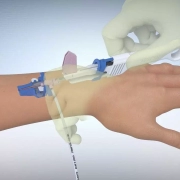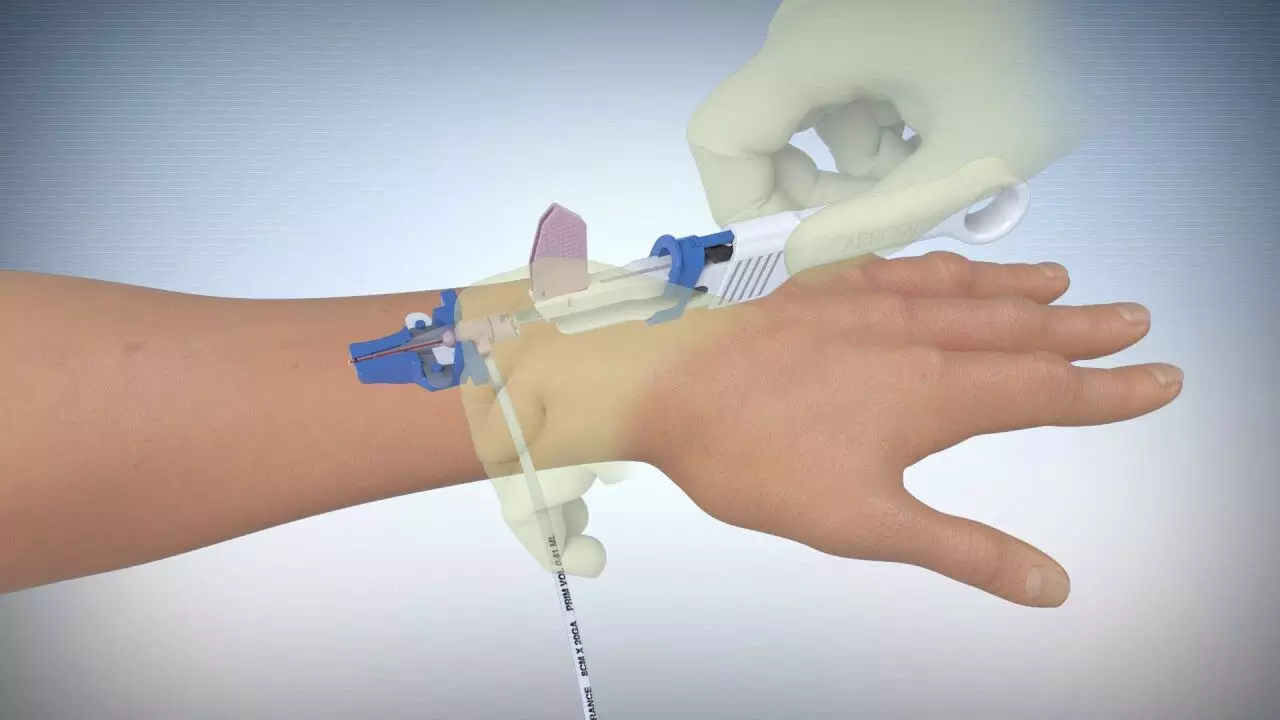
Having a heart attack significantly increases the risk of developing other serious long-term health conditions, a major new study shows.
Researchers at the University of Leeds have analysed more than 145 million records covering every adult patient admitted to hospital over a nine-year period to establish the risk of long-term health outcomes following a heart attack-in the largest study of its kind.
Whilst heart attacks are a serious and life-threatening condition, the British Heart Foundation estimates that nowadays more than seven in 10 people survive them, provided they receive quick and emergency treatment to get the blood flowing to the heart muscle again. Yet previous research has shown that heart attacks can have health implications for patients including further conditions which affect the heart and circulatory system, but also conditions affecting other parts of the body and mental health conditions.
The new research, part funded by The British Heart Foundation and Wellcome, shows that patients who had a heart attack went on to develop further conditions at a much higher rate than people of the same age and sex who had not had one.
Up to a third of patients went on to develop heart or kidney failure, 7% had further heart attacks and 38% died from any cause within the nine-year study period.
Heart failure, atrial fibrillation, stroke, peripheral arterial disease, severe bleeding, kidney failure, type 2 diabetes and depression all occurred more frequently for people who had a heart attack compared with those who did not; but the risk of cancer was lower overall, and the risk of dementia did not differ overall.
The study also identified that people from more socioeconomically deprived backgrounds were more likely to die or develop serious long-term health conditions following a heart attack. In particular, those from more deprived backgrounds were more likely to develop heart and kidney failure, compared to people from less deprived backgrounds of a similar age.
Lead author Dr Marlous Hall, Associate Professor of Cardiovascular Epidemiology in Leeds’ School of Medicine and Multimorbidity Research in the Leeds Institute for Data Analytics (LIDA), said: “There are around 1.4 million heart attack survivors in the UK who are at high risk of developing further serious health conditions. Our study provides accessible online information of the risk of these health outcomes for specific age, sex and socioeconomic deprivation groups so that individuals surviving a heart attack can be well informed about their future risks, in order to support informed healthcare decision making with their doctor.
“Effective communication of the likely course of disease and risk of adverse long-term outcomes between patients and healthcare professionals can promote positive lifestyle changes, encourage patients to stick to treatment, and improve patient understanding and quality of life.”
“Our study highlights the need for individual care plans to be revised to take into account the higher demand for care caused by survivorship.”
The researchers analysed the records of all individuals aged 18 years and over, who were admitted to one of 229 NHS Trusts in England between 1 January 2008 and 31 January, 2017. This amounted to 145,912,852 hospitalisations among 34,116,257 individuals. There were 433,361 reports of people who had a heart attack for the first time. The average age of heart attack patients was 67 years, and 66% of patients were male.
The study looked at 11 non-fatal health outcomes detailed below, plus death from any cause, and compared the results to a control group of 2,001,310 individuals.
Health outcomes
The research showed a significantly increased risk of developing some conditions following a heart attack, when compared to the control group of patients.
Most likely was heart failure, with 29.6% of the study group going on to develop the condition within nine years of their heart attack, compared with 9.8% of the control group over the same time frame.
Kidney failure developed in 27.2% of the patients in the study group, compared with 19.8% of the control group.
Some 22.3% of the study group went on to develop atrial fibrillation, compared with 16.8% of the control group.
And new hospitalisation for diabetes was seen in 17% of the study group, compared with 14.3% of the control group.
Other conditions were:
Severe bleeding – Study group: 19%; Control group: 18.4%
Cerebrovascular disease – Study group: 12.5%; Control group: 11.6%
Peripheral arterial disease – Study group: 6.5%; Control group: 4.06%
Death from any cause – Study group: 37.8%; Control group: 35.3%
Overall, hospitalisation records indicating depression occurred in 8.9% of people after a heart attack – which was 6% more likely following a heart attack than in the control group. Women were more likely to develop depression after a heart attack than men, especially those who had their heart attack at a younger age. 21.5% of women who were under the age of 40 at the time of their heart attack had hospitalisation records for depression compared with 11.5% of men in the same age category.
There was no overall difference in the risk of dementia following a heart attack compared with the control group. Whilst the risk of vascular dementia was more likely in the study group, the difference observed was small (study group 2.3%; control group 2.1%).
In contrast with other health outcomes the research showed that cancer was less pronounced in the study group than in the control group. Some 13.5% of the study group went on to develop cancer after their heart attack, but this compared with 21.5% of the control group. Researchers believe there are likely many factors affecting this finding but the specific reasons for fewer cancers after a heart attack remain unclear and require further investigation.
Morag Foreman, Head of Discovery Researchers at Wellcome, said: “This research provides valuable insight into the types of support and interventions that may be needed for patients following a heart attack, helping both doctors and patients make informed decisions during recovery and beyond.”
“This research shows how cohort studies and analysis of large data sets can further our understanding of key health challenges and demonstrates the value to supporting discovery research in the field of population and public health. As survival rates following a heart attack improve, understanding the longer-term impacts on physical and mental health is crucial.”
Professor Bryan Williams, Chief Scientific and Medical Officer at the British Heart Foundation, said: “While more people than ever are surviving heart attacks, there can be longer term consequences. Particularly after a major heart attack, people can be left with irreparable damage to their heart, putting them at increased risk of heart failure.
“This study sheds further light on how heart attacks are associated with increased risk of developing other serious health conditions, including heart failure and atrial fibrillation. It also found that those from more socioeconomically deprived backgrounds are at greater risk of further ill health after a heart attack, and at a younger age. The research suggests that these patients may benefit from additional support and monitoring to help reduce their risk of developing further health conditions.
“It is vital NHS has the resource, including staff, infrastructure and equipment, to deliver the care that patients need to help them stay in the best possible health for longer.”
Reference:
Marlous Hall ,Lesley Smith,Jianhua Wu,Chris Hayward,Jonathan A. Batty,Paul C. Lambert,Harry Hemingway,Chris P. Gale, Health outcomes after myocardial infarction: A population study of 56 million people in England, PLoS Medicine, https://doi.org/10.1371/journal.pmed.1004343.




















